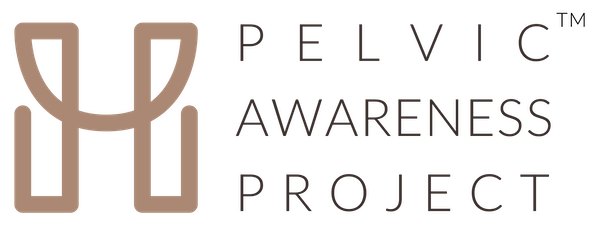Sleep is a universal balm, and there’s probably not an adult alive who doesn’t wish they had more of it. Sleep is good for just about every aspect of our health, including healing and recovery. This makes good sleep critical for anyone who has undergone major surgery, including hysterectomies.
The best sleeping positions after a hysterectomy are on either your back or on your side, supported by a well-placed pillow. Finding the right sleeping position can help you sleep better by alleviating pain, discomfort and painful gas.
Keep reading to learn how to properly implement these sleeping positions to help aid your recovery. First, we’ll briefly explore hysterectomies and their relationship to sleep.
Hysterectomies & Sleep
A hysterectomy is an operation to remove a woman’s uterus (also called the womb). It’s more common for women in their 40s, typically performed to treat heavy periods, long-term pelvic pain, fibroids, and certain cancers. It’s a serious surgery with a long recovery time, and is therefore only used when less invasive treatments have been unsuccessful.1
One of the side effects of hysterectomies is that it thrusts women into menopause, which presents its own issues. In fact, one study found that “women who underwent surgical menopause were more than twice as likely to experience insomnia and reported lower quality sleep compared with women who went through natural menopause.”2
A comparative study found that most women who had a hysterectomy reported sleep disturbances three weeks after their surgeries. Their quality of sleep was related to both their age, level of education, and whether they’d had a vaginal or abdominal surgery.3
So treat yourself after surgery– to a healthy diet, comfy clothing, lots of water, and lots of sleep. If ever there were a time to binge watch Netflix without remorse, this is it.
The Best Sleeping Positions After A Hysterectomy
Always speak to your doctor first, but in general, there are two good sleeping positions for women healing from an abdominal hysterectomy.
Note that both of these sleeping positions require more additional support than you may be used to. You can get this support in the form of a pillow or two, or with a specially designed foam block.
Also note that, as you may have guessed, sleeping on your stomach isn’t a good idea until you’re healed.
Supported Supine Lying
Supine lying, which means lying on your back, is often recommended after many surgeries. In this sleeping position, you’re on your back with your arms by your side. This is a neutral position, so it keeps your body in natural alignment easily.
When in this position, place a support or pillow under you knees to relieve pressure from your lower back. Pelvic floor physiotherapist Michelle Kenway also recommends using this pillow to help you do regular calf pump circulation exercises.
When you are lying on your back in this position, use just one pillow that keeps your head and neck in a neutral position. This is because you can create neck and/or upper back strain if pillows push your head too far forward.
Supported Side Lying
If you regularly sleep on your side, then you should be able to keep doing so while in post-hysterectomy recovery. You may also find this position helps with gas, which can be painful after hysterectomies. However, it’s important to speak to your doctor to ensure this position will be right for your body.
It’s very important to use supports in this position, because lying on your side can stretch tissues in your abdomen and pelvis, and it can also lead to lower back, hip and/or pelvic pain.
To avoid this, put a pillow between your legs, which will keep your hips aligned and your pelvis from rolling forward.
And placing a pillow length-ways on the mattress beside you can also support your upper body while preventing your lower abs from stretching too much.
And just like with the supine sleeping position, it’s import to keep your head and neck in a neutral position here, so you don’t want your pillow to be too high again.
Best Sleep Position for Each Hysterectomy Type
The best sleeping position after a hysterectomy can vary depending on the type of surgery and the individual’s comfort. Here are some general guidelines for each type of hysterectomy:
Total Hysterectomy (TH) and Partial/Subtotal Hysterectomy:
- Sleeping Position: After these types of hysterectomies, it’s generally recommended to sleep on your back with a few pillows under your head and upper back to elevate the upper body slightly. This can help reduce strain on the surgical site and provide comfort.
- Additional Tips: Place a pillow under your knees to relieve pressure on your lower back and pelvic area. This position can minimize tension on the incision and make it easier to get in and out of bed.
Total Hysterectomy with Salpingectomy or Salpingo-Oophorectomy:
- Sleeping Position: The sleeping position is similar to a total hysterectomy. Sleeping on your back with some elevation can be comfortable, especially if you’ve had both ovaries removed.
- Additional Tips: Managing hormone fluctuations after ovary removal can impact sleep quality. Consult with your healthcare provider about hormone replacement therapy and its potential effects on sleep.
Radical Hysterectomy:
- Sleeping Position: Sleeping on your back with elevation is advisable, similar to total hysterectomy cases. However, the extent of surgery may make it necessary to take extra precautions to avoid putting pressure on the surgical site.
- Additional Tips: Radical hysterectomy is a more extensive procedure, and it may take longer to recover fully. It’s essential to follow your surgeon’s advice closely regarding post-operative care and sleeping positions.
Laparoscopic Hysterectomy or Minimally Invasive Hysterectomy and Robotic-Assisted Hysterectomy:
- Sleeping Position: Sleeping on your back or your side may be more comfortable after minimally invasive procedures. Choose the position that minimizes strain on your incisions and provides the most comfort.
- Additional Tips: Pay attention to any discomfort or tension in the abdomen while sleeping. Position pillows strategically for support and to relieve pressure.
Posterior or Anterior Repair (Hysterectomy with Pelvic Floor Repair):
- Sleeping Position: Sleeping on your back with your knees bent and supported by pillows can help reduce tension on the pelvic floor and surgical site.
- Additional Tips: Pelvic floor repair surgeries often accompany a hysterectomy. Follow specific instructions from your surgeon regarding sleeping positions to support your recovery.
Vaginal Hysterectomy:
- Sleeping Position: After a vaginal hysterectomy, you may have more flexibility in choosing your sleeping position. Many women find it comfortable to sleep on their back or sides, as there are no abdominal incisions to worry about.
Recovery Timeline for a Hysterectomy
The recovery timeline for a hysterectomy can vary depending on several factors, including the type of hysterectomy, individual health, and any complications that may arise during surgery. However, here is a general guideline for the recovery period and how long a woman should consider changing her sleep position:
- Immediate Post-Op: In the immediate post-operative period (the first 24-48 hours), you will likely be in the hospital, and your activities, including your sleep position, will be closely monitored. You may be advised to sleep on your back with your upper body slightly elevated.
- First Week: During the first week or so after surgery, you will need to be cautious with your movements and avoid strenuous activities. Continue to sleep on your back with elevation to minimize strain on the surgical site.
- 2-6 Weeks: The initial recovery phase typically lasts 2-6 weeks, depending on the type of hysterectomy. During this time, you should continue to prioritize sleeping on your back to allow the incision to heal and minimize the risk of complications. However, you may start to transition to other sleeping positions if you feel comfortable and it does not cause discomfort.
- 6-12 Weeks: By the 6-12 week mark, most women are well on their way to recovery. You may gradually resume sleeping in your preferred position, such as on your side or in a different posture. It’s essential to listen to your body and make adjustments as needed to ensure comfort.
- Long-Term: In the long term, there are typically no restrictions on sleep position related to the hysterectomy itself. You can choose the sleeping position that is most comfortable for you and allows you to get a good night’s rest.
Sleep Disorders After a Hysterectomy
Hysterectomy itself is not typically a direct cause of sleep disorders. However, there are several factors related to the surgery and the conditions it may be performed for that can indirectly affect sleep. It’s essential to consider these factors when discussing sleep-related concerns after a hysterectomy:
- Postoperative Pain: Pain and discomfort are common after any surgical procedure, including a hysterectomy. Pain can make it challenging to find a comfortable sleeping position and can disrupt sleep patterns.
- Hormone Changes: Depending on the type of hysterectomy, especially if the ovaries are removed (oophorectomy), there can be hormonal changes. Hormone fluctuations can impact sleep quality and patterns, leading to symptoms like hot flashes, night sweats, and mood swings.
- Stress and Anxiety: Surgery and the recovery process can be stressful and anxiety-inducing. This emotional stress can affect sleep and contribute to the development of sleep disorders like insomnia.
- Medications: Pain medications and other medications prescribed during the recovery period may have side effects that affect sleep. Some pain medications can cause drowsiness or insomnia, depending on the type and dosage.
- Changes in Physical Activity: During the initial recovery period, physical activity may be limited. Reduced physical activity can impact sleep quality, as exercise is often linked to better sleep.
- Menopausal Symptoms: For women who were near menopause or in perimenopause before the hysterectomy, the surgery may accelerate the onset of menopausal symptoms, which can include sleep disturbances.
- Preexisting Sleep Conditions: Women who had sleep disorders or sleep-related issues before the hysterectomy may find that their conditions are exacerbated during the recovery period due to the factors mentioned above.
To mitigate potential sleep-related issues after a hysterectomy, it’s essential to:
- Follow your surgeon’s post-operative care instructions carefully, including pain management strategies.
- Discuss hormone replacement therapy (if needed) with your healthcare provider to manage hormonal changes.
- Practice stress-reduction techniques such as relaxation exercises or mindfulness meditation to manage anxiety and stress.
- Maintain a regular sleep schedule and create a comfortable sleep environment.
- Communicate any sleep disturbances or concerns with your healthcare team so they can provide guidance and support.
If you continue to have poor sleep after a hysterectomy, consider consulting a sleep specialist or healthcare provider through our physician finder who can assess your specific situation and recommend appropriate interventions or treatments for sleep disorders.
When Can I Sleep On My Stomach After A Hysterectomy?
You should wait until you are fully healed from your hysterectomy before sleeping on your stomach. On average, recovery time is from 6-8 weeks for a total abdominal hysterectomy (TAH), or less for a vaginal or laparoscopy hysterectomy.4
Always speak to your doctor about how best to recover from any surgery, and learn more about the relationship between sleep and pelvic pain here.
Finally, no matter what your sleeping position, be sure to practice good sleep hygiene, so that you’re setting yourself up for the best night’s sleep possible. Find more tips for care and recovery after pelvic floor disorder surgery here.




















